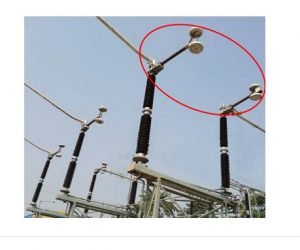The main purpose of an isolator is that when a fault happens in one area of a circuit or power supply then electrical isolator
detaches . It is a manually operated mechanical switch which cut off a part of the electrical power and it will open a circuit only
when it is under no load. Its main purpose is to isolate one portion of the circuit from the other and is not intended to be opened
while current is flowing in the line. Isolators are commonly used on both ends of the circuit breaker. This is done so that repair
or replacement of circuit breaker can be done without any danger.

Operation of Electrical Isolator
As no arc quenching technique is provided in isolator it must be operated when there is no current flowing through the circuit. A
live circuit cannot be closed or opened by isolator operation. A complete live closed circuit should not be opened by isolator
operation, and also a live circuit should not be closed and completed by isolator operation .This is insisted inorder to avoid huge
arcing in between isolator contacts. That is why isolators must be open after circuit breaker is open, and these must be closed
before circuit breaker is closed. The isolator can be operated both by hand locally and by motorized mechanism from a remote
position. Motorized operation arrangement costs more when compared to hand operation; hence it should be very clear when
choosing an isolator for the system whether it is hand operated or motor operated is economically optimum for the system. Hand
operated isolators can be used by systems whose voltages are upto 145KV.For higher voltage systems like 245 KV or 420 KV
and above motorized isolators are preferred.

Isolators can be classified into the following three types according to their position in the power system.
1. Bus side isolator: It directly connects to the main bus
2. Transfer bus side isolator: It directly connects to the transfer bus.
3. Line side isolator: It is generally located at line side of the feeder
Depending upon system requirement isolators can be classified into
1. Double Break Isolator
2. Single Break Isolator
3. Pantograph type Isolator
In single break isolator only one terminal connects and disconnects whereas in double break isolator both terminals at each side
connect and disconnect because central terminal is moveable. In pantograph type isolator both terminals at each side connect and
disconnect only due to the forces of stress or tension, and mostly it is no locking mechanism. This type of pantograph isolator is
widely employed in electric trains to get electricity from overhead transmission lines. Miniature circuit breaker (MCB) as
apparent from the name is designed for low power areas such as homes and offices. It is designed in small compact cases such
that it can be preferred for domestic scale wiring systems. Horizontal double break isolator are abundantly used in substations.
